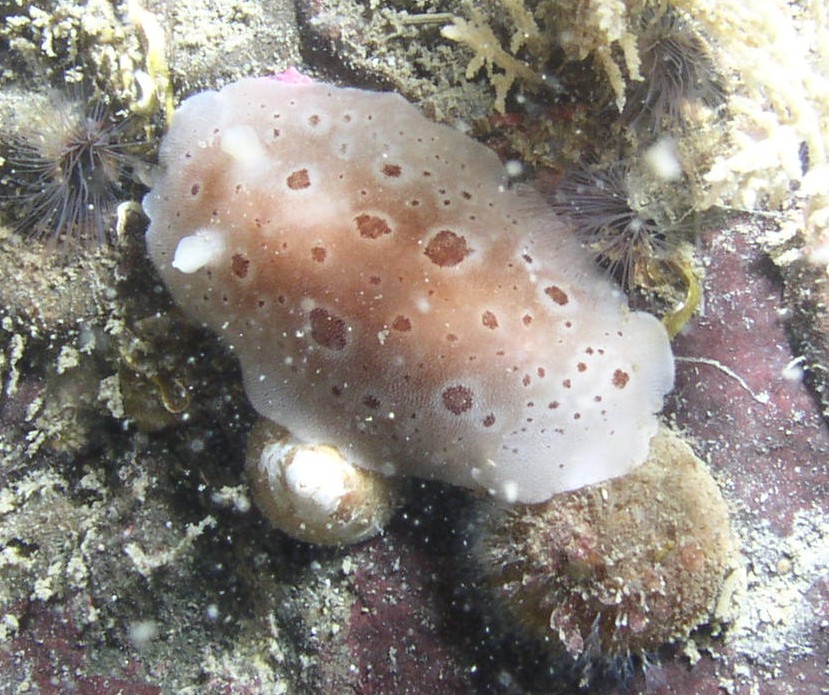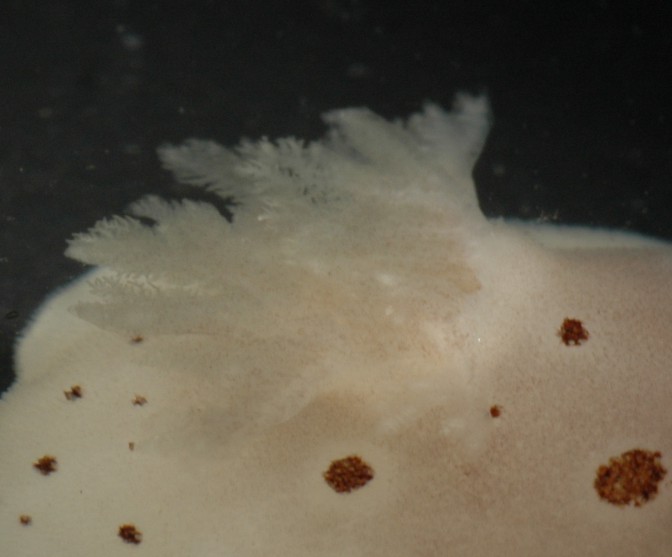Geitodoris heathi (MacFarland, 1905)Common name(s): Gritty dorid |
|
| Synonyms: Discodoris heathi | |
| Phylum Mollusca
Class Gastropoda Subclass Opisthobranchia Order Nudibranchia Suborder Doridacea Family Discodorididae |
|
| Geitodoris heathi, about 5 cm long, at Watauga Beach, Kitsap County, WA | |
| (Photo by: Karin Fletcher, May 2019) | |
How to Distinguish from Similar Species: This species is very similar to Dialula sandiegensis and, according to some keys, would be keyed as that species. However, it has spots rather than rings on the dorsum. In my experience there is a range of phenotypes in this group of nudibranchs from solid spots through spots with pale centers to rings; so it may be part of a species complex or the same species as D. sandiegensis.
Geographical Range: Vancouver Island, BC Canada to Bahia de San Qintin, Baja California, Mexico
Depth Range:
Habitat:
Biology/Natural History: Feeds on sponges such as Halichondrea panacea, Myxilla incrustans, and Adocia gellindra.
| Return to: | |||
| Main Page | Alphabetic Index | Systematic Index | Glossary |
References:
Dichotomous Keys:Kozloff 1987, 1996
Smith and Carlton, 1975
General References:
Morris
et al., 1980
Scientific Articles:
Web sites:
General Notes and Observations: Locations, abundances, unusual behaviors:

In this view of the anterior part of the body, one can see the stubby
rhinophores and also the papillae on the upper surface of the foot.
Photo by Dave Cowles, July 2005

An underwater photo taken by Kirt Onthank, June 2007
Authors and Editors of Page:
Dave Cowles (2005): Created original page
